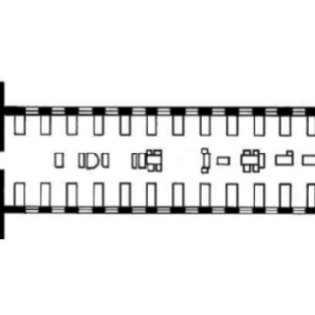Thoughtful and Intentional Design
November 21 2020
“We accept design flaws that don’t improve our lives”
I listened to NPR’s “The Power of Design” on my walk today and really enjoyed learning about how designers create meaningful interactions online and offline. Listening to Guy Raz is always super intriguing, I think he always does such great research about his subjects and seems like a natural when interviewing his interviewees. In this podcast episode the main takeaway for me was, through trust, intention and thoughtfulness, designers tackle everyday obstacles and transform them into seamless experiences.
As an advocate for change, designers want to overcome overlooked frustrations and turn them into delightful experiences. Tony Fadell, the primary creator of the iPod at Apple sought to keep customers excited after purchasing an iPod. Prioritizing the customer, Steve Jobs and Tony Fadell composed the term “staying customers” as a persona. Back then, every gadget had to be charged before you could use it. I think this idea is so simple, and very easily overlooked, but the detail that Job’s understood was to reduce the friction from a new purchase. Having an observant eye to notice that there is a possibility to fully charge gadgets during production, Job is strong-willed in putting consumers first and in-turn making Apple’s products more thoughtful. This example reminds me of the term, “service design,” which ”improves the experiences of both the user and employee by designing, aligning, and optimizing an organization’s to better support customer journeys.” (Gibbons, 2017). We’re all pretty familiar with how Apple products are minimalistic but powerful in nature, but the customer journey often starts the moment a consumer walks into the Apple store: often on wooden tables, iPhones, iPads and MacBooks are docked equidistance apart, employees always greet you at the door and ask how they can help you. I think this whole experience creates the allure of Apple’s brand in addition to subtle features of having a fully charged gadget.
More often than not, service design is difficult to flesh out when products are being created and displayed online. Breaking the social bias of allowing people to live in a stranger’s home, AirBnB created a new way of tourism through trust. Prioritizing design, AirBnB is successful because it accounts for who they are creating for. Despite some horrific incidents of people throwing house parties in AirBnBs and hosts leaving guests stranded, AirBnB today has ensured safety and trust between potential guests and hosts within the platform. Brian Chesky and Joe Gibbea, the co-founders of AirBnB have utilized service design through the components built out within their platform. For example, making the service as friendly as possible through the tone of their brand, the soft color palette. However, the main component that I was intrigued about was the messaging feature that had a specified size for potential guests to ask questions to their hosts so as to foster the right amount of disclosure. Having just the right size, probed users to compose a message that had the main outline of why they wanted to stay with a host. Even being able to solidify this design with metrics of having either a super short message or novella long message would reduce the acceptance rate, I am intrigued by how product design can be measured and quantified.

Example of dialogue box with prompts for guests | Image: Pintrest
I think everyone is a designer in their own way, as long as one is creative and wants to solve problems. I think the one thing that Florence Nightingale, the co-founders of AirBnB and Steve Jobs and Tony Fadell have in common is that they are able to execute their problems they want to solve. Florence Nightingale’s mission was to “provide decent healthcare to everyone”. Campaigning for cleaner, lighter and less dense clinical areas to be built, Nightingale reduced the amount of disease and infections being contracted in the ward through the re-structuring of how clinical areas are laid out. Through subdivisions in a hospital ward, this design is known as a Nightingale ward. With iteration and intention to mitigate diseases within the ward, Nightingale designed a sure-fire way to save lives which is admirable.

Nightingale ward type layout, St Thomas hospital | Image: Research Gate
Undeniably, this podcast has re-affirmed my decision on pursuing a career in design. Though there’s this connotation of design to mostly be aesthetically pleasing, majority overlook that design is also a conceptualization of pulling together observations from everywhere and untangling problems so as to make life more pleasant.
Works Cited
Gibbons, S. (2017). Service Design 101. Nielsen Norman Group. Retrieved 21 November 2020, from https://www.nngroup.com/articles/service-design-101/.